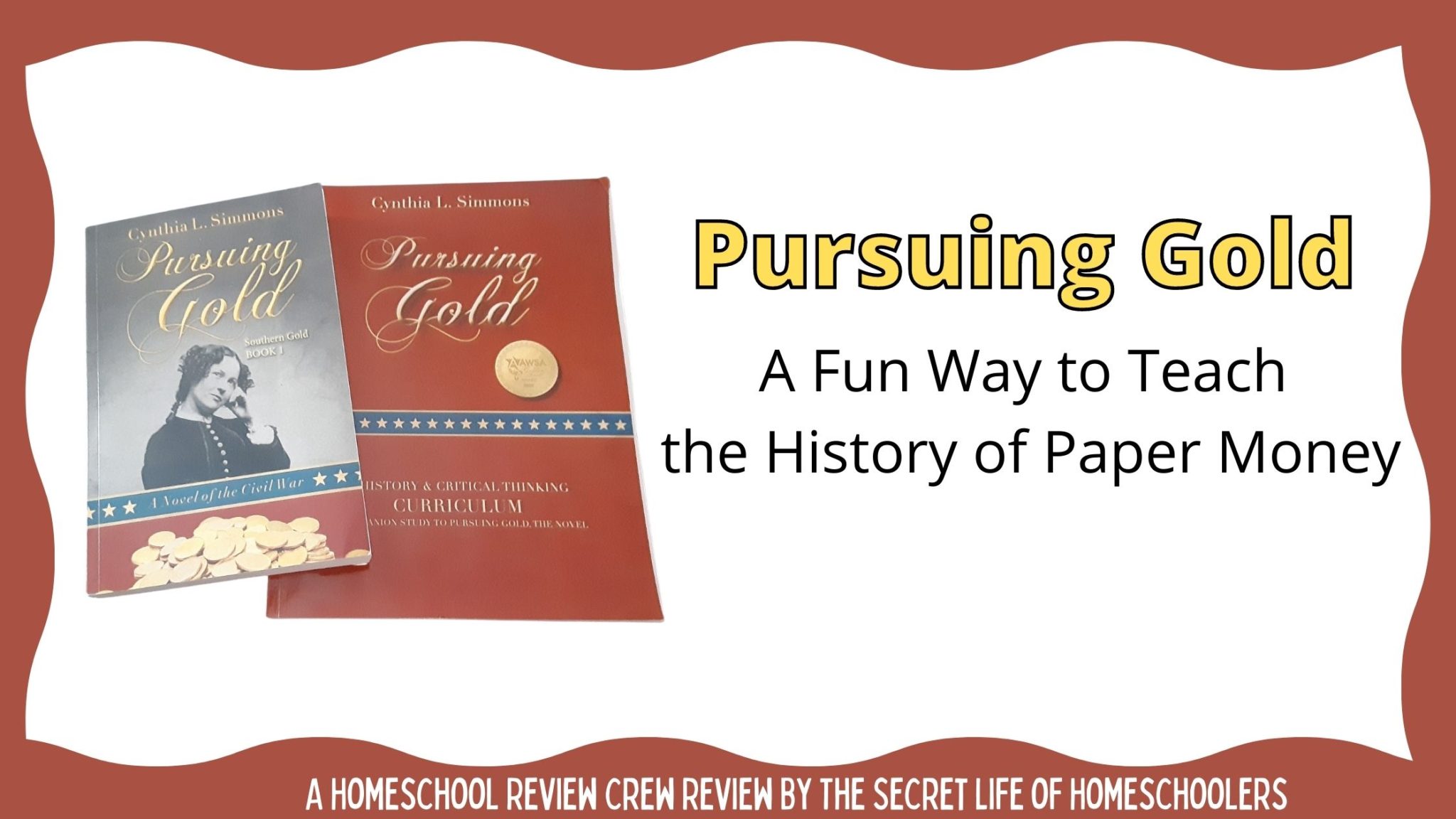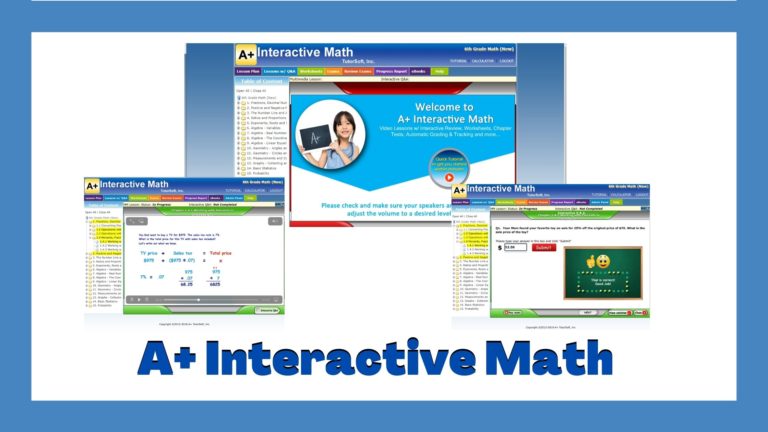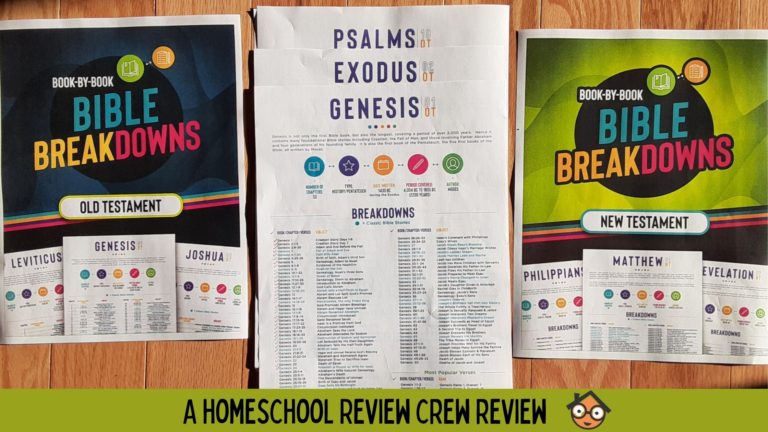Disclosure: I received this complimentary product through the Homeschool Review Crew.
I love finding literature-based curricula. It is such a fun way to learn topics without a boring textbook. For example, over the past few weeks, we’ve been learning about the history of paper money through the book Pursuing Gold and Pursuing Gold: A History and Critical Thinking Curriculum. The book and curriculum are by Cynthia L. Simmons and Heart of the Matter. It has been such a fun way to learn about this topic.

What is Pursuing Gold About?
The book, Pursuing Gold, is set in the South during the Civil War. The book follows the story of Peter Chandler, who is co-owner of a bank, and Mary Beth Roper, whose father is Peter’s business partner. Unfortunately, Peter’s father has died recently, leaving inexperienced Peter to handle things. Likewise, Mary Beth’s father is gravely ill, so Peter must learn to run a bank during a war.
Set in 1862 Tennessee, the war has been going on for a year. People are worried the war will soon be at their doorstep. Peter and Mary Beth are working together to help keep C&R bank from going under. It is a challenge because Peter doesn’t want to use the new Confederate paper money he is being pressured to. This causes contention in the community, and people question his loyalties. Nevertheless, he and Mary Beth work together to unravel problems at the bank while striving to stay true to their beliefs.
How This Book Teaches the History of Paper Money
I wasn’t all that familiar with the history of paper money. However, Pursing Gold does a great job using a novel to teach about the origins of paper money through Peter, a bank owner. In addition, the book shows how banks worked during this period and how things were changing with the introduction of paper money.
Physical Description of the Book
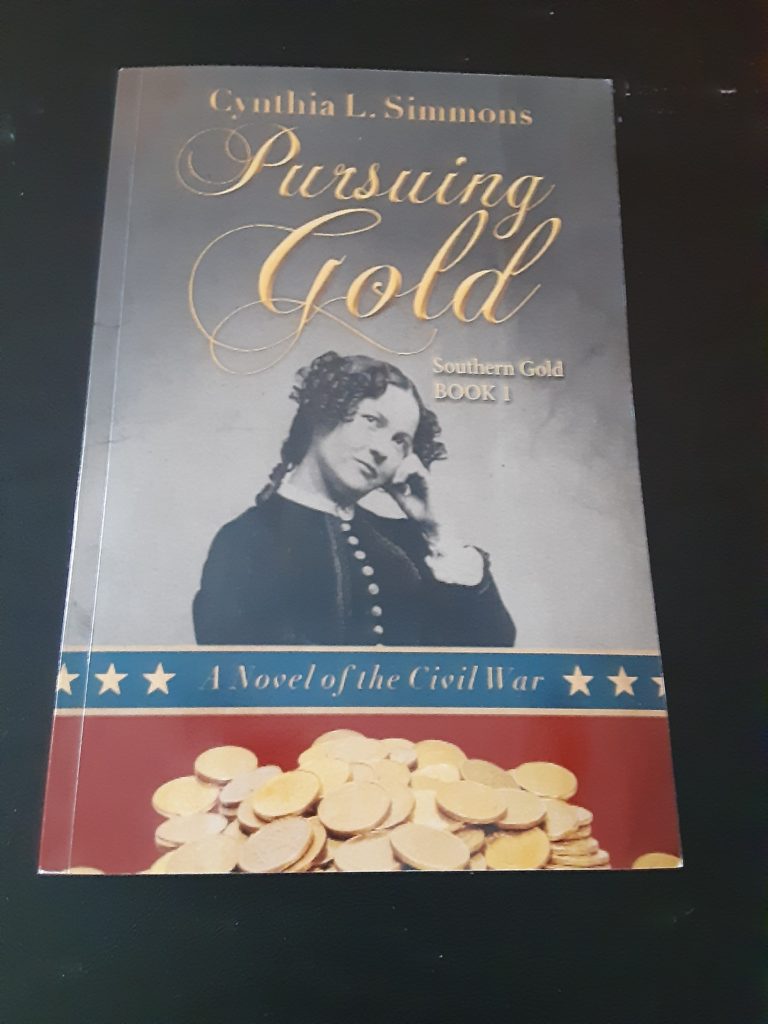
Pursuing Gold is a larger-sized paperback book. It is the first in the Southern Gold Series. This book is 377 pages long, with discussion questions, Author’s Note, and glossary at the end of the book. The font is easy to read because it isn’t super small. Plus, the spacing is good on the page. It makes it easy to read for kids and adults whose sight isn’t quite as sharp as it used to be (like mine!). Also, the pages are a good weight, so they won’t tear easily.
Overall, the book is of good quality. I’m not worried my kiddos will destroy it quickly when tossing it into their backpack or the back seat for a trip.
Pursuing Gold: A History and Critical Thinking Curriculum
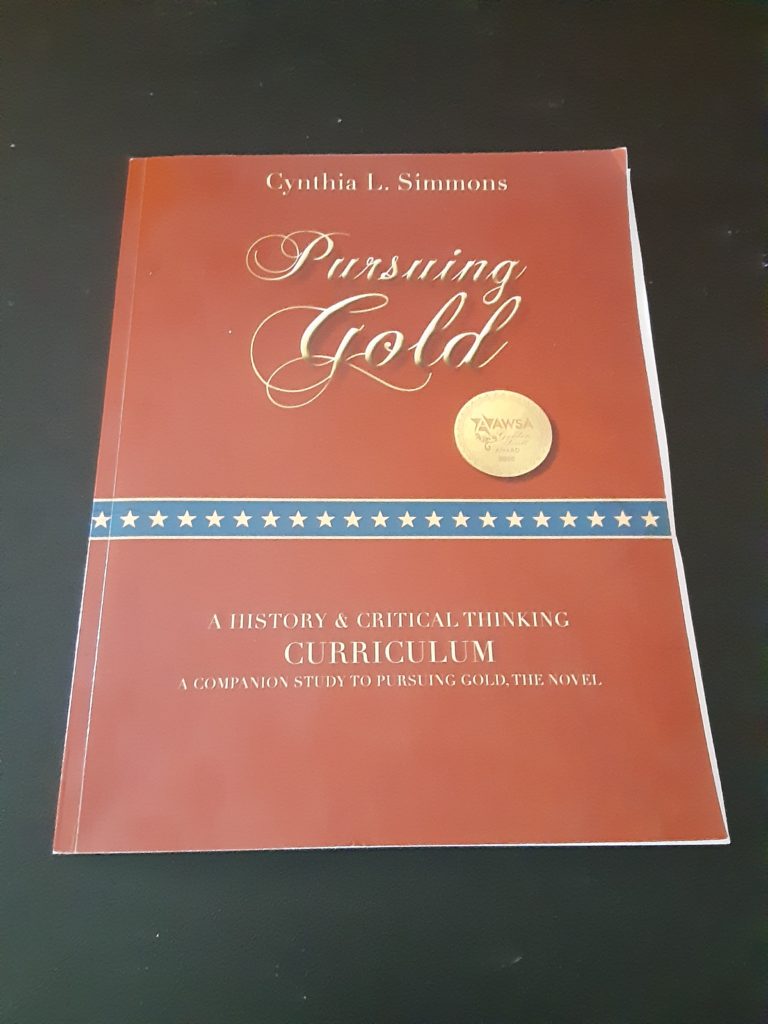
There is a companion curriculum to help you get the most out of Pursuing Gold. It is worth buying. It has further historical information on paper money and other things to do with daily life during this period.
Besides the historical information, it also provides discussion questions for each chapter, biblical connections and questions to think about, vocabulary practice of terms through crossword puzzles, and more.
If you really want to delve deeper into finances, there is a whole activity on learning to manage your money.
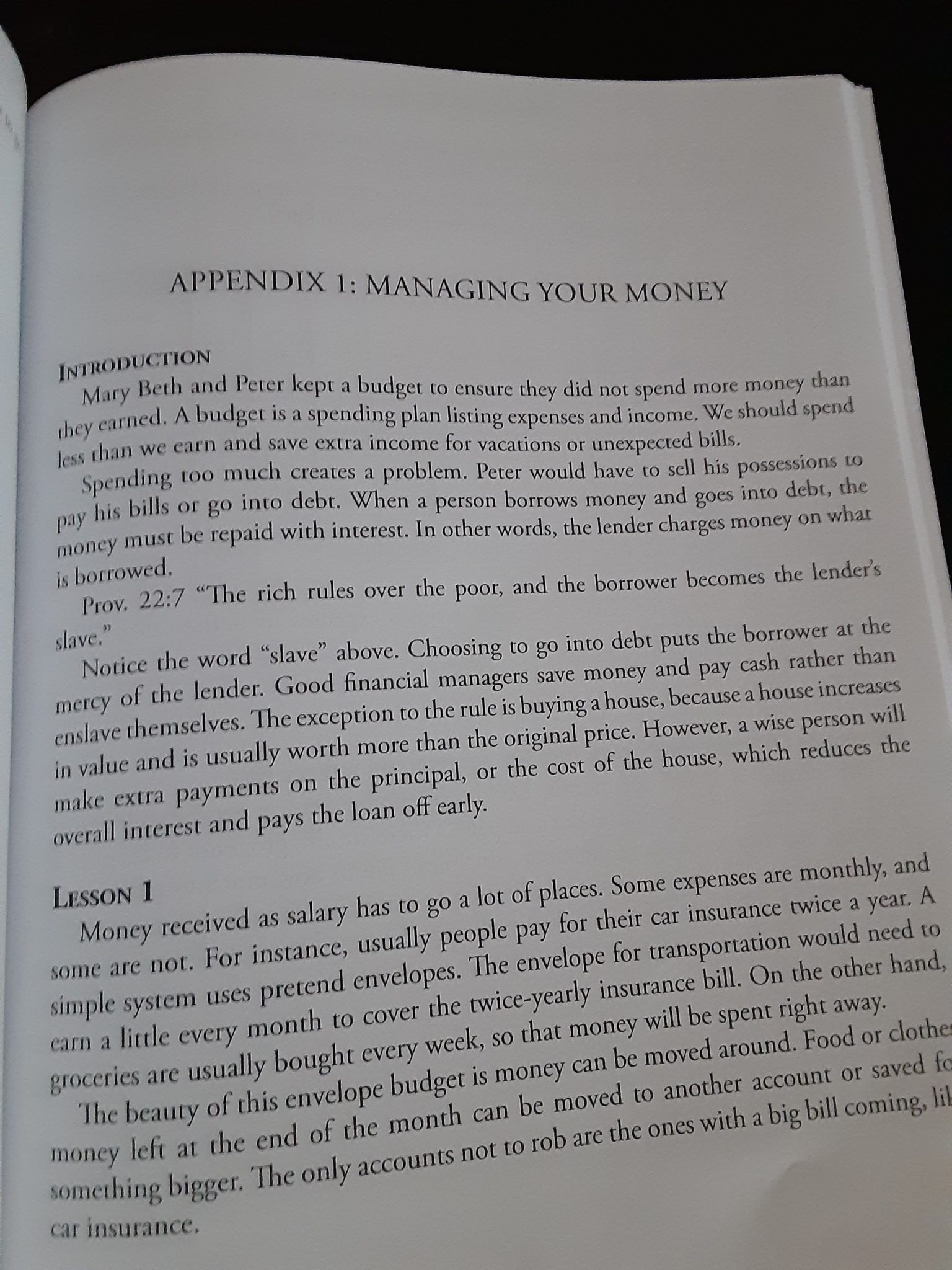
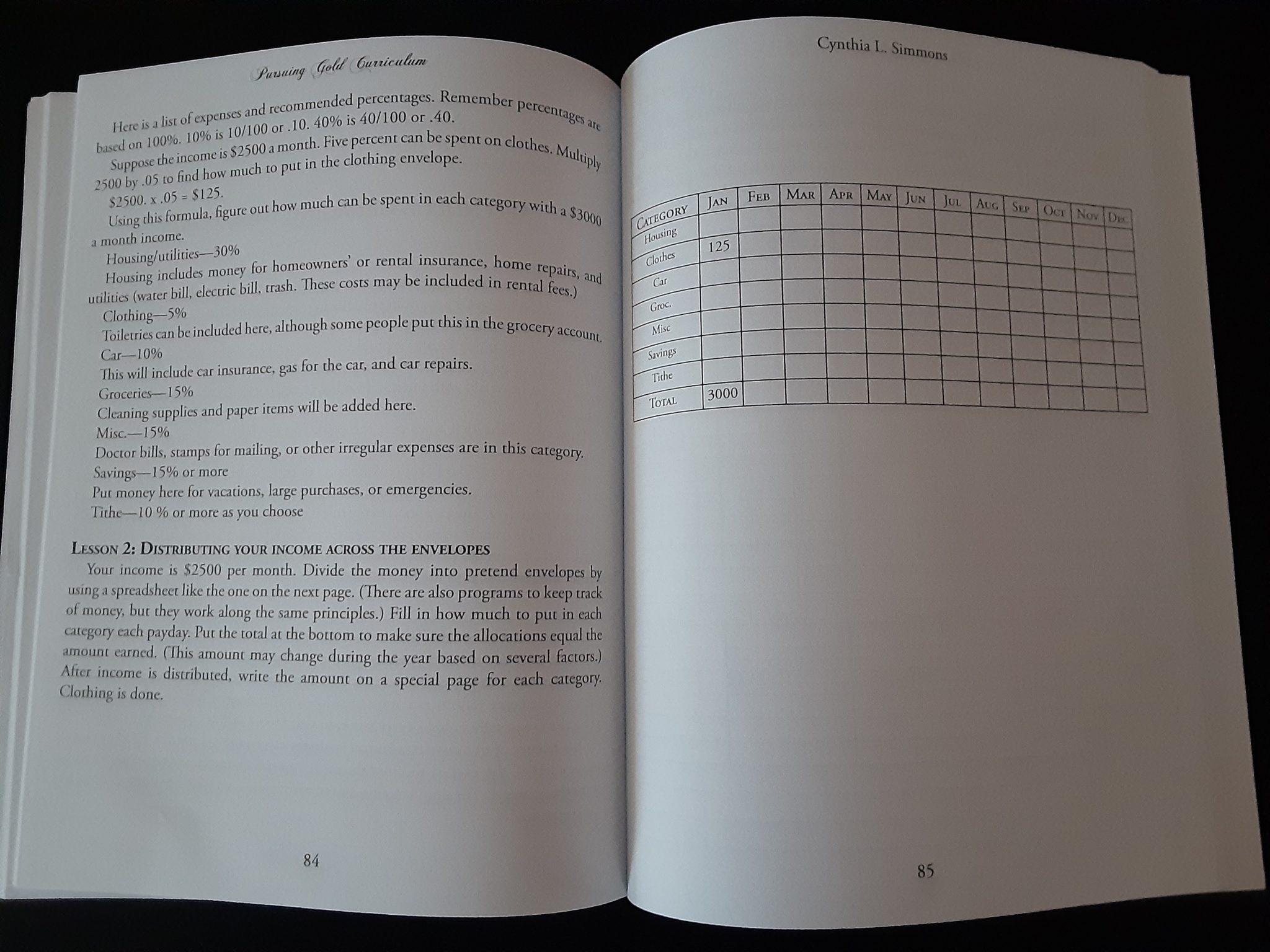
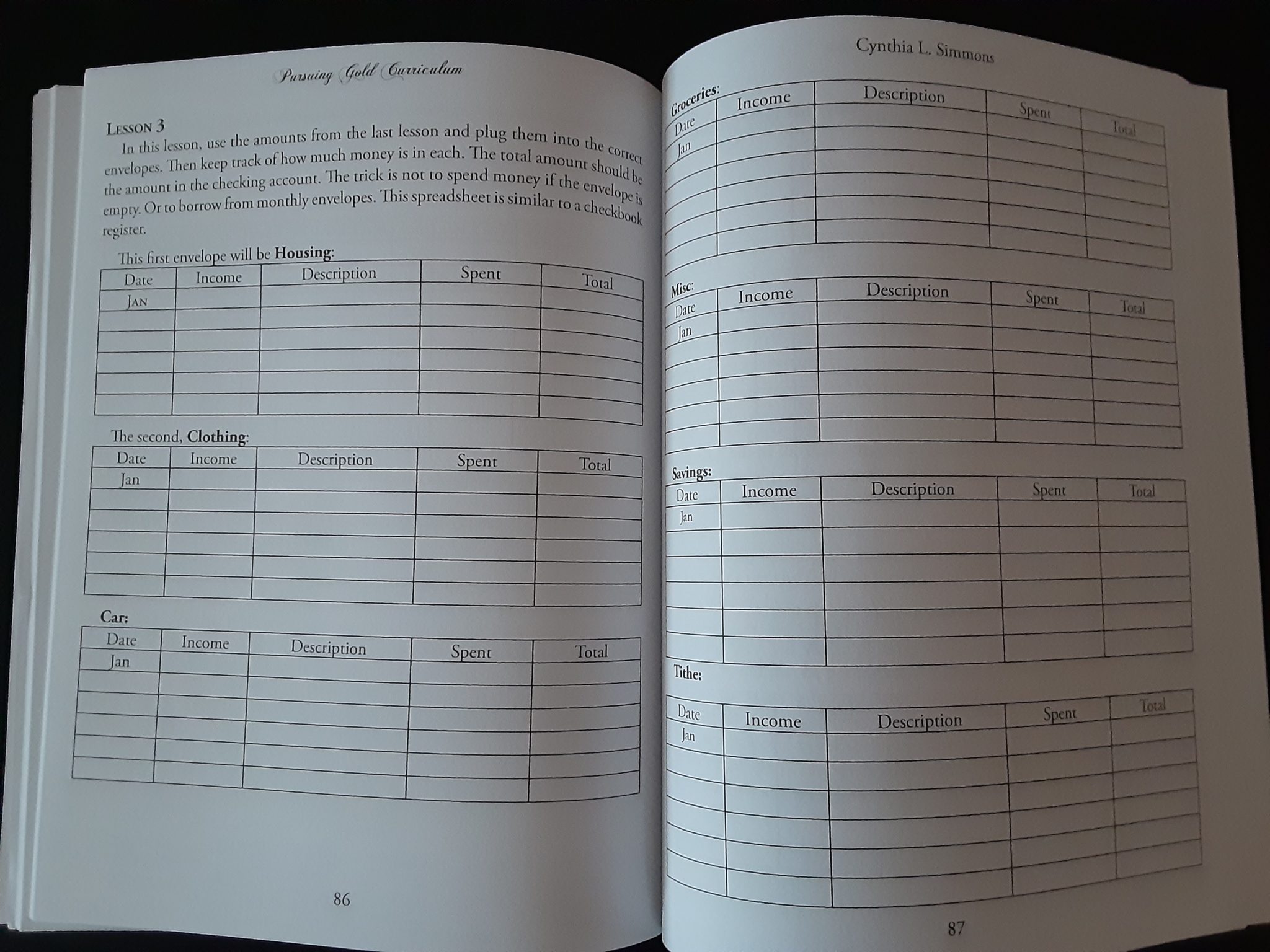
The curriculum guide is reasonably priced and helps you teach the history of paper currency while reading the novel.
Using This Book and Curriculum to Teach the History of Paper Money
Now the fun part! How did we use this novel and curriculum in our homeschool? Well, I’ve been wanting to get back to read aloud with my kiddos. They are teens now and often scoff at it. So I felt this was the perfect opportunity.
I started reading this to both my kids (13 and 15). Quickly, I realized this was not a good fit for my 13-year-old son. Much of the book is about the friendship/courtship between Peter and Mary Beth. My son is a young thirteen, so he couldn’t get into it. So, I didn’t have him keep listening. He just isn’t mature enough for the subject matter, even though it is entirely appropriate with its strong Christian values.
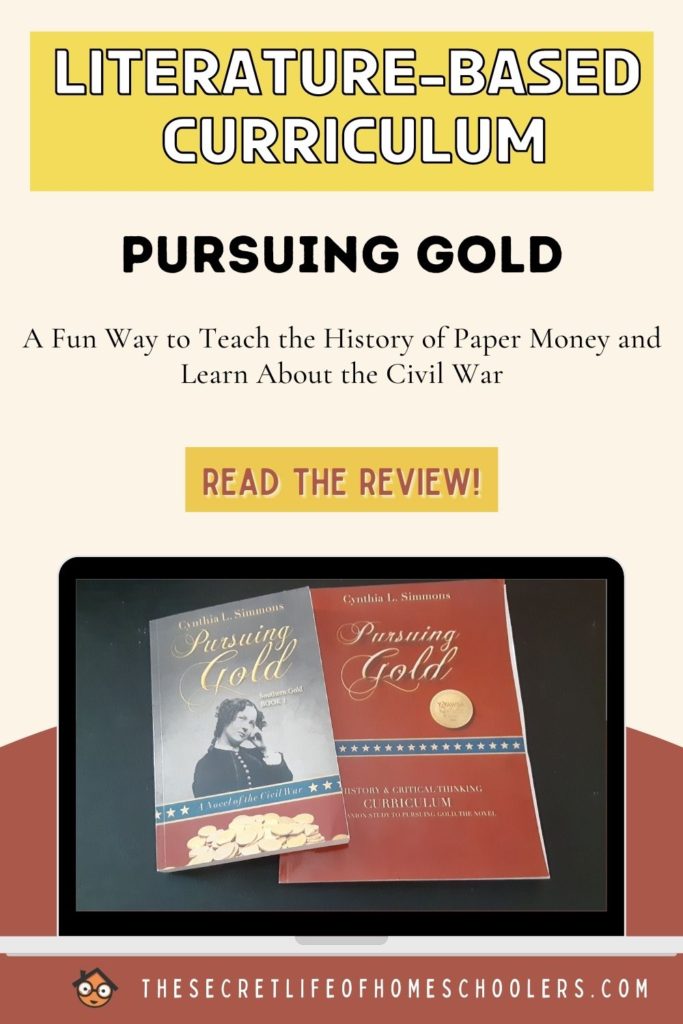
Teaching the History of Paper Money with My 15-Year-Old
So, in the end, I read Pursuing Gold with my 15-year-old daughter. My daughter really got into the book. She and I love history, especially Civil War history. So, this was an excellent way for us to read the book together and have fun discussions.
Most weekdays, I would read a chapter (sometimes more), and we would go through the discussion questions together. We did this orally. I liked the variety of questions that often have kids share their thoughts on a situation or make a judgment call on how something was handled. It did an excellent job incorporating critical thinking skills and relating things to scenarios or people in the Bible. The questions weren’t just basic recall questions about the story.
Each chapter had only a few questions, so it was more natural to include them in our book discussion. Often, our conversations went beyond the questions provided. We’d talk about the characters’ motives, who we thought might be making counterfeit bills, and who we thought was causing problems at the bank. It was great.
My daughter did some of the crosswords and a morse code activity from the curriculum guide. They were simple enough to complete.
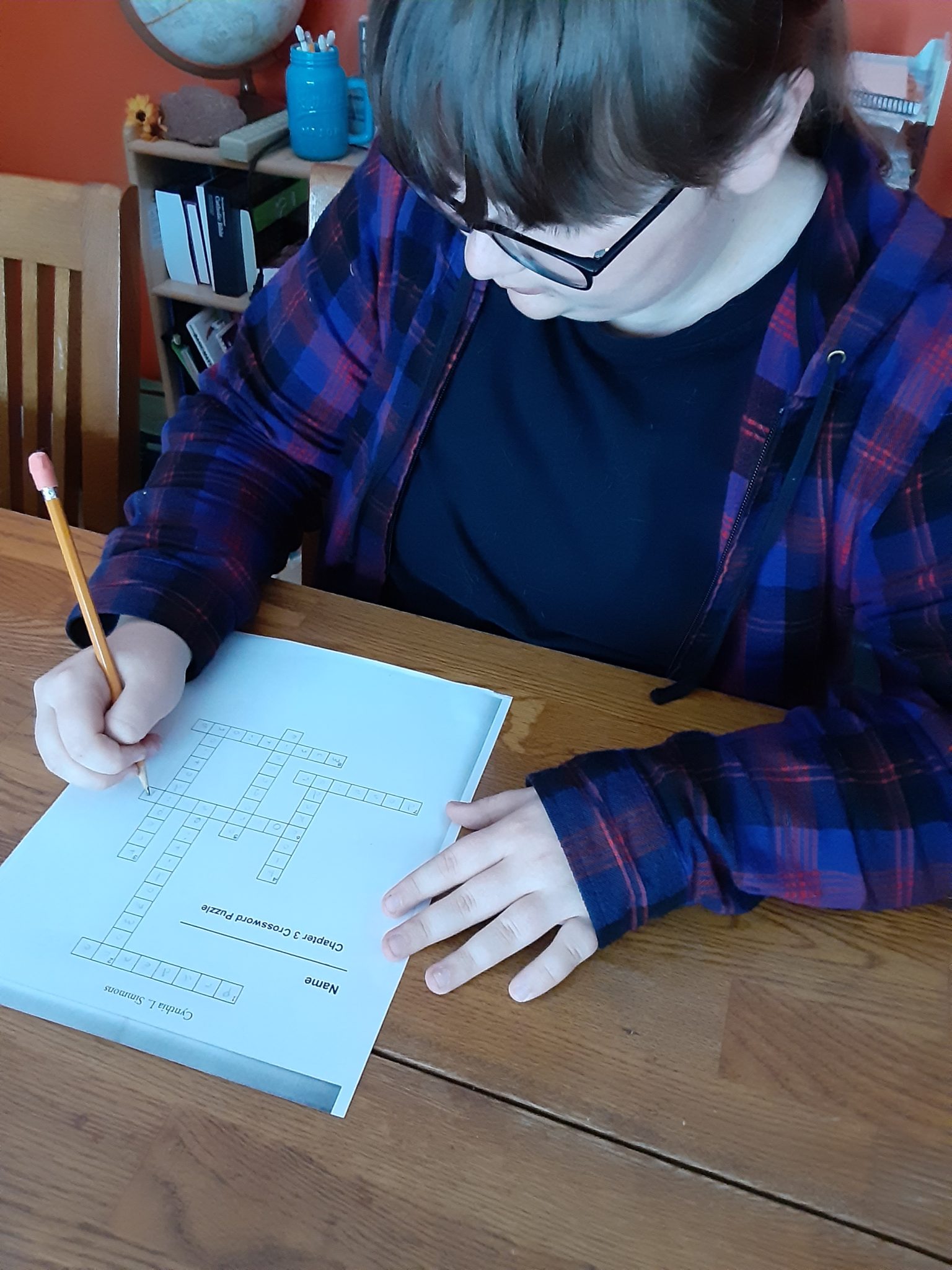
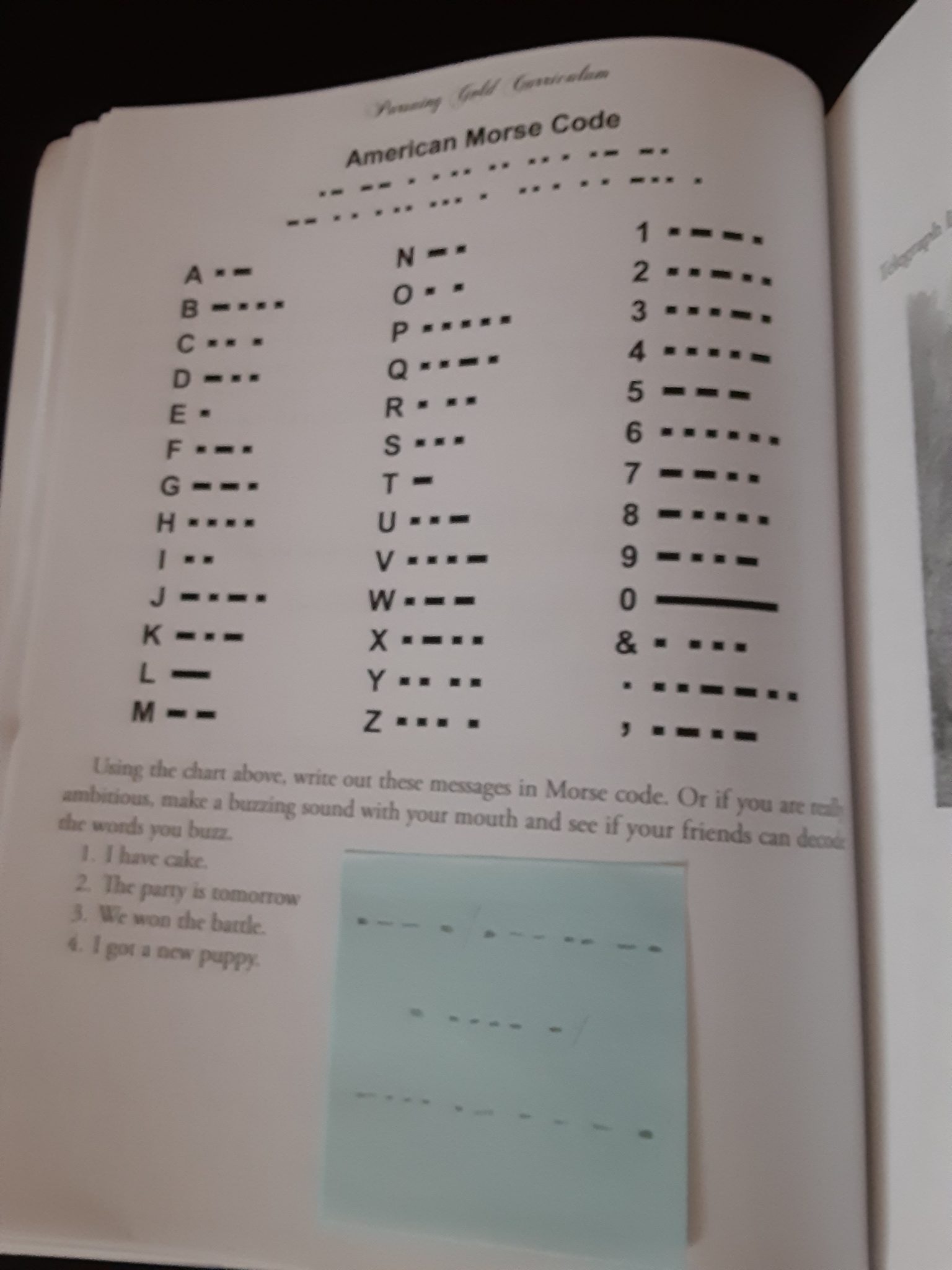
The nice thing for parents is if your child is working on this independently, there is an answer key in the back to help you correct their work!
My daughter and I learned a lot about the history of money and how it was changing during the Civil War. We also liked learning other historical facts about society at that time in history. For instance, did you know that when the post office first came about people picked up their mail at the post office? As Cynthia L. Simmons teaches in Pursuing Gold: A History and Critical Thinking Curriculum, mail wasn’t delivered to people’s homes until 1863 (p. 31).
It really is a good literature-based curriculum to use in your homeschool.
Other Ways You Could Use Pursuing Gold
What I found great about Pursuing Gold is you can use it in your homeschool in multiple ways. We used it for reading aloud, but a teenager could read it and do the questions independently. The book has some great themes and characters that could be used for reading class.
Also, this book isn’t only great for teaching the history of paper money but as a historical novel about the Civil War. Kids will see how people lived their lives during this period, their worries about the war, the challenges of being a Southern that didn’t necessarily agree with slavery. So, it would be a good reading assignment to do while studying the Civil War.
Overall Thoughts
Overall, we really enjoyed Pursuing Gold and the companion curriculum guide. We have a few more chapters to go, and we can’t wait to see how it all ends. I think we will probably continue the series. I like how Cynthia L Simmons is a Christian author, so the content is okay for my teen to read. I’m not worried about inappropriate content.
Other Review Crew members read Pursuing Gold and used the curriculum in their homeschool. Take a look at their reviews. You can also click the banner below to read them.

Happy Homeschooling!

